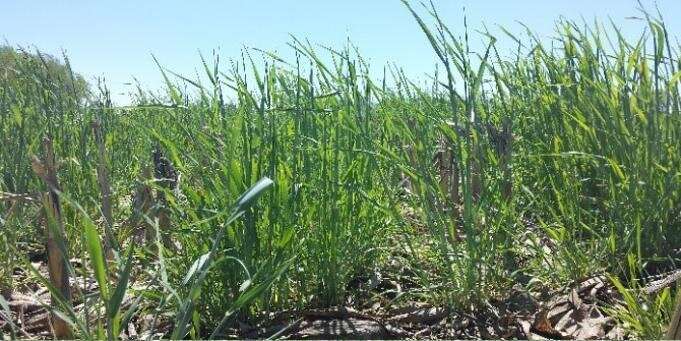Impacts of cover crop planting dates on soil properties after 4 years

Cover crop impacts on soil properties depends on cover crop productivity. Planting cover crops early and in a diverse mix of species could be an option to boost biomass production and enhance benefits to soils. However, the impacts of early planting and species mixes on soil properties are not well understood.
In a recent article in Agronomy Journal, researchers investigated how broadcasting cover crops pre-harvest or drilling post-harvest affected biomass production and soil properties after four years. Cover crops were cereal rye, a mix of rye, legumes, and brassicas, and a no cover crop control. These were studied under no-till rainfed and irrigated continuous corn and corn-soybean rotations at three sites in the eastern Great Plains.
Cover crop biomass was low (<1 Mg ha-1), but was usually greater under pre-harvest than post-harvest establishment. Rye and mixed cover crops produced similar amounts of biomass. The low amounts of produced cover crop biomass did not led to few changes in soil properties that varied by site and specific soil property. Overall, early-planted cover crops and cover crop mixes had minimal effects on soil properties in this region after 4 years, indicating the need for further research on cover crop impacts.
More information: Sabrina J. Ruis et al, Impacts of cover crop planting dates on soils after four years, Agronomy Journal (2020). DOI: 10.1002/agj2.20143
Journal information: Agronomy Journal
Provided by American Society of Agronomy


















